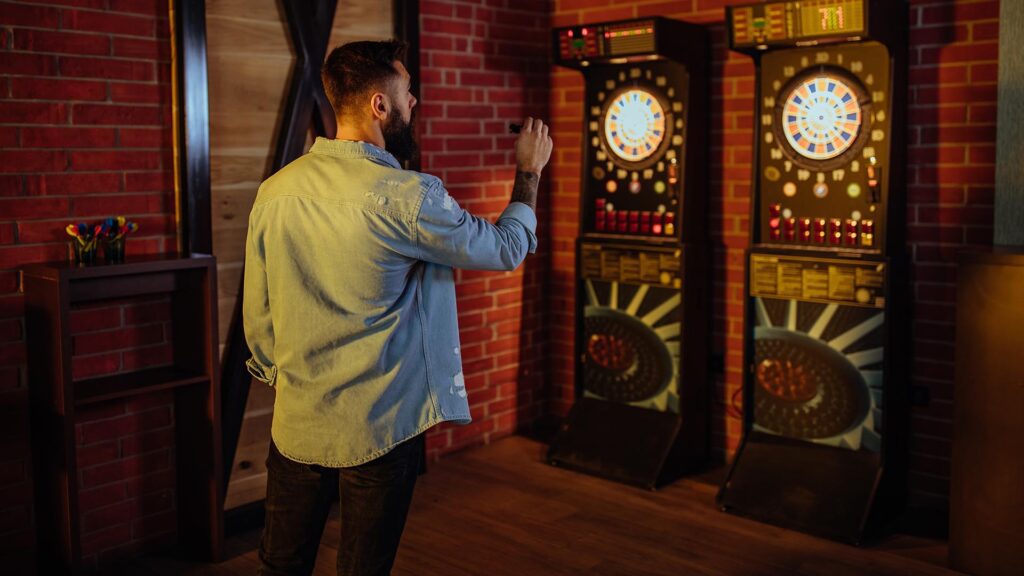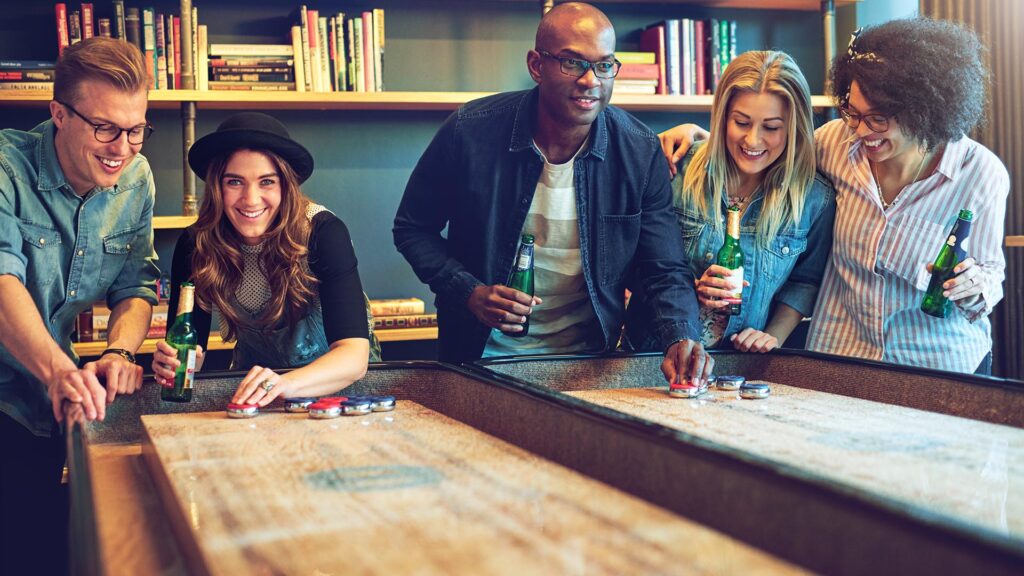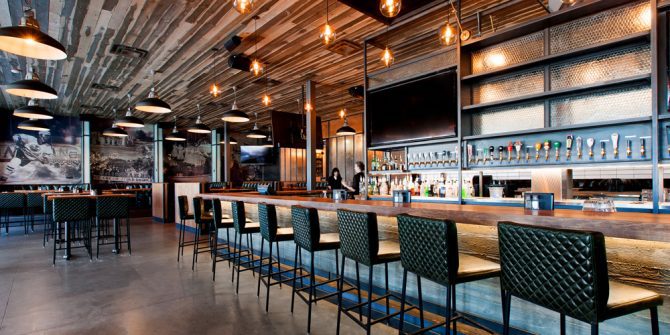
What is Competitive Socializing?
At its core, competitive socializing combines the best of leisure entertainment with the thrill of a challenge. It’s not merely about grabbing a drink with friends at a bar that happens to have a dartboard or a pool table. It’s diving deep into the game, making it the heart of the hangout. Add a dash of Instagram-worthy moments and a solid food and drink game, and you’ve got an outing that’s more than just memorable—it’s an experience!
How is it Different from Eatertainment?
The difference lies in the integration. While eatertainment venues have distinct sections or times for dining and entertainment, competitive socializing venues focus on the integration within the social setting. Whether it’s axe throwing, mini-golf, or digital games, the challenge and gameplay are central to the entire outing. In eatertainment, while entertainment is a significant component, it doesn’t necessarily revolve around competition; it could be live music, dance performances, or even theater. On the other hand, competitive socializing inherently calls for hands-on involvement, ensuring guests are actively engaged in the experience.
Why is Competitive Socializing Gaining Popularity?
- Unique Experience: With numerous dining and entertainment options available, people are on the lookout for fresh, distinctive experiences. Competitive socializing offers a unique twist to a regular night out, making it memorable.
- Engagement: The competitive element keeps guests engaged. Whether it’s scoring points in a game or challenging friends, the evening becomes an interactive adventure.
- Bonding: Healthy competition can strengthen bonds between friends and family. It can also act as an icebreaker, turning strangers into teammates.
- Variety: Whether you’re into revamped classic board games, cutting-edge digital escapades, or something in between, there’s an activity tailored to your liking. Dive into trivia nights, immerse yourself in VR face-offs, or enjoy a round of bocce. The choice is yours, ensuring everyone finds their perfect match in competition.

The beauty of competitive socializing lies in its ability to foster genuine interactions. It’s not just about winning or losing, but about the shared moments in between—those bouts of laughter after a missed shot, the playful banter, and the camaraderie built around teamwork or friendly rivalry.
For businesses, this trend presents a golden opportunity. By integrating competitive elements into their offerings, venues can encourage patrons to stay longer, engage more, and ultimately, spend more. It’s a win-win, both for businesses and for customers seeking a richer, more memorable outing. It’s beneficial for both the companies and the consumers looking for a more enriching, unforgettable experience.
With its increasing popularity, we can expect venues to incorporate more tech-driven games, tailored experiences, and perhaps even themed nights.
Competitive socializing reflects our changing social landscape. As people seek more immersive and interactive experiences, the blend of competition with socializing meets this demand perfectly.







